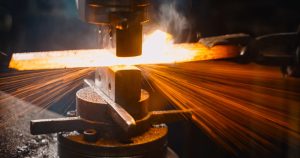 The dawn of steel
The dawn of steel
In the pre 1800s, the process of technical innovation as well as growth of demand made it not only possible, but necessary for a new type of production to occur, this is the same as it happened with the iron making industry with the introduction of the Walloon process throughout Northwestern Europe. Mechanization resulted in higher production. The growing authority that forge masters had over the common workers in the smelting and hammering plants, signified the development of forges as industrial firms. The government also had strong influence and intervention during these times. This included orders, patents to protect innovations and the appearance of state owned industrial factories.
Growing slowly
?¢‚ǨÀúPig iron?¢‚Ǩ‚Ñ¢ production grew to a dramatic extent. Britain was ahead of the game; however the United States grew faster. Many other countries were in the pig iron growth race as well. This became even more apparent during World War I as military demand for the product became overwhelming. Before 1860, steel was rather expensive because it was manufactured in small quantities. It was used for such things as swords, tools and cutlery. The large metal structures were always made from wrought or cast iron.
The rise of steel
Steel dropped significantly in cost when the Bessemer system came into existence. In this process, an air blast burned the carbon and silicon out of the pig iron. In doing so it also released heat, which caused the temperature of the molten metal to rise. As time went on, the process of producing steel was made easier, faster and less expensive, making steel available in large quantities for the products that wrought iron and cast iron used to be used for. As more processes became available, steel was then worked into alloys and materials for specific uses. Today, steel comes in a large multitude of alloys with different strengths and different attributes.

 The dawn of steel
The dawn of steel

